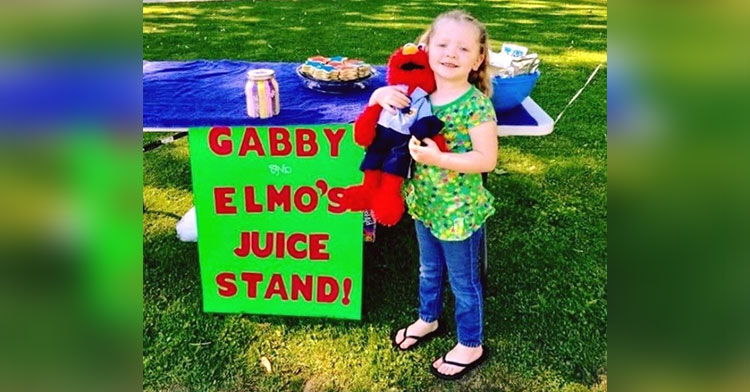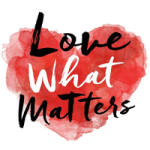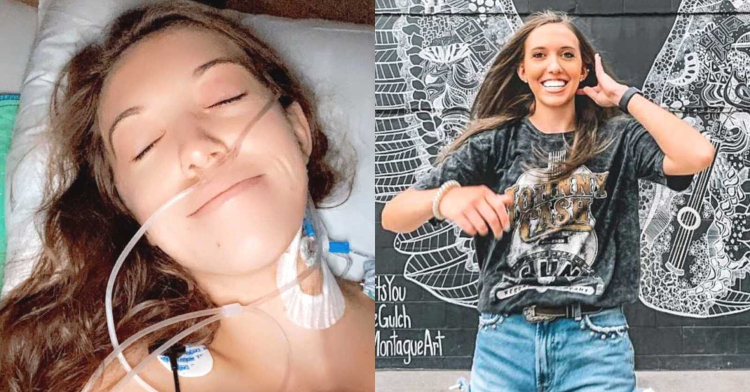“‘Hey, Mom, I signed up to be a living organ donor.’ She responded, ‘I’m an organ donor on my license, too.’ ‘No, mom, living organ donor.’ She was caught off guard because she didn’t know exactly what this entailed, and to be quite honest I didn’t either until a few hours prior.
I had been scrolling Instagram when I came across a post from a friend showing off her gnarly abdominal scar with a brief caption about her story. She had donated a portion of her liver to a family friend in need and was celebrating their successful recoveries. I was immediately taken back, one) by how selfless, kind, and courageous she was, and two) for not realizing living organ donations were possible.
Similar to my mom’s line of thinking, I had only associated being an organ donor with my driver’s license, which indicates whether or not I’m willing to make my organs available for donation at time of death. Donating an organ while alive was a new concept for me. Now curious, I took to Google to do some research. I remember stumbling across a statistic from 2019 posted on Donatelife.net. It read, ‘Sadly, 8,000 people die each year (on average 22 people each day–almost one person each hour) because the organs they need are not donated in time.’
This one really struck a chord. I instantly thought of my uncle who had passed away in 2012. He was initially diagnosed with pulmonary fibrosis and was told he would need a lung transplant. Finally, after landing a spot on the list, he was soon diagnosed with lung cancer, disqualifying him from receiving a transplant as he was at risk and had the potential of recurring cancer. Losing him at a young 49 was really hard on my family. I can’t tell you how many times in the past 8 years I wished my uncle was here to have more shared experiences and created memories to hold on to. I know my family feels the same.
Whether it’s losing someone to cancer, organ shortage, or any cause prematurely, we always wish we could have more time with them. It was at this moment I knew I wanted to donate. It was simple. I had no hesitations compromising a few months of my life to recover from donation surgery if it meant preventing someone else and their family from experiencing the ongoing heartache mine has and continues to go through. I quickly applied to be a living liver donor on the transplant institute website. During my research, I found kidneys and livers are the most commonly transplanted organs for living donations.
Although the recovery post-kidney donation seemed shorter and less severe, I chose to donate a portion of my liver because it is the only organ of the body that regenerates and reaches full functionality within 2-3 months post-surgery. A few short weeks after I submitted my application, I was at the hospital for the evaluation process. The assessment consisted of bloodwork, scans, X-rays, and meeting with the care team, specialists, and surgeon. Although the majority of the testing was centered around my physical health, there was a psychological evaluation where I met with a psychologist. It was her job to divulge and understand my motivation to donate, make sure I was fully aware of all potential risks, and understand what type of support system I would have throughout this process.
In most situations, donors are friends or family members of the recipient and therefore the donor’s motive is very clear. My situation was different as I was a non-directed donor, meaning there was no one specific I had planned to donate to. The psychiatrist was moved by my ‘why’ but did her due diligence by reminding me even though the risk and chance of complications were less likely as a healthy, young 24-year-old, I had more to lose on the chance something went wrong. I respected her honesty and attempt to shed light on the ugly possibilities. For someone who naturally overthinks, constantly analyzes, and heeds caution to worst-case when making decisions, I strangely had no doubts.
This not only surprised me but my family and friends too, as they know I’m the type of person to typically play it safe. Maybe it was naïve of me to think this way, but it made the whole process extremely easy. I was so confident in what I was doing because it was something I felt called to do, and I knew I was backed by some of the best surgeons and care team members. I decided to put it all in God’s hands early on. The week after my evaluation, I was approved to be a living donor. 5 weeks later, I received a call I had a match. I remember getting off the phone and crying because it was all starting to feel real. Something I had been talking about for weeks was finally happening. I was on my way to making a difference in someone’s life.Read More
My surgery was scheduled 6 weeks out and I made sure to keep myself busy (well, as busy as you can during a global pandemic) to ease my anxiousness. I moved the majority of my belongings from my residence in Nashville, Tennessee up to my parents’ house in Pittsburgh, Pennsylvania where I would stay during my 3-month recovery period. Pittsburgh was also where the institute was and where the surgery would take place. Additionally, I spent a lot of time working out as I knew I was going to miss it during recovery, and worked my job up until the day before my procedure. On the morning of surgery, my mom and I left the house at 4:30 a.m. to head to the hospital.
Although the drive felt like one of those early morning trips to the airport where you’re tired but excited and anxious for what’s next, I knew my mom was doing her best to put on a brave face for me. Due to COVID, I was only allowed to have one designated visitor in the hospital with me, which meant my dad couldn’t come with us to show his support or be there to help comfort my mom while I was in surgery. My parents were so proud of me for what I was doing, but I knew surgery made them nervous. As parents, they always want to protect me and make sure I am safe, which was something they had no control over in this situation, but they supported me nonetheless. I could sense my mom’s nerves in the car, so always trying to make light of the situation, I played ‘How To Save A Life’ by The Fray. We both laughed.
My procedure went really well. One of the first things I asked after waking up was how the recipient was doing. Due to HIPPA laws, the doctors couldn’t tell me anything more than the fact their surgery went smoothly and they were doing well. The following days in the hospital were probably the most challenging for me in my donation process. Going into the surgery completely healthy and then coming out in a great deal of pain and discomfort was difficult to mentally accept. I had to remind myself several times the recipient went from feeling extremely ill to full of life again and the pain I was feeling was only temporary.
I was discharged from the hospital 4 days after surgery. The pain subsided a little more each day, and by the tenth day, I had stopped taking all pain medication. 2 weeks after surgery, I had my first follow-up appointment. The doctors said I was doing extremely well and I left the hospital cleared to drive if I felt up to it. At this time, I was still urged to avoid lifting anything over 5 pounds, strenuous activities or stretches, and consumption of alcohol. By 2 and a half weeks post-surgery, I was walking a few miles on the treadmill, and at 7 weeks, I was jogging. I resumed working from home at 5 weeks post-op and was able to get back into my normal daily routine.
Exactly 3 months after surgery, I returned to the transplant institute for my next follow-up appointment. I was most excited for this one because if everything checked out, I’d be cleared from all restrictions. My surgeon showed me the results of my CT scan that day. It was incredible to see my liver had already grown into the space of the resected portion. I left the appointment with a smile on my face and free to resume all my normal activities. I took to social media to share my story and most importantly raise awareness for living organ donations. After all, this is what sparked my interest and landed me here approximately 9 months later.
The response I received was amazing! I had people reaching out interested in learning more about the process and others sharing stories about their ties to organ donations. To be honest, it always seems weird to call it my story because this whole experience took two. All along there was a character in my story who I didn’t know anything about. Throughout this whole process, I was so curious about the recipient. Every waiting room I had sat in, the preoperative holding room I lay in, and every lap I made around the hospital floor hallways, I always wondered. Were they sitting a few chairs away? Which holding station were they in? Did I just walk past their room? I was always curious how they were doing and how they felt when they got a call about receiving a match.
As a non-directed donor, you are told very early on HIPPA prevents both parties from knowing any personal information about each other, but after surgery, only if both parties agree, they may connect. I told my coordinator from the beginning I was willing to meet my recipient, but I would also respect and understand if they felt differently. Now, 4 months after surgery, ready to end this chapter content with the unknown, I was pleasantly surprised when I received a phone call from my coordinator. She told me my recipient had reached out for my information in an effort to connect. It has only been a few weeks since and I have not heard from them yet, but I am anxiously waiting and excited to complete our story together.
At the end of the day, I would do it again if I could. I may have changed someone’s life, but this experience has forever changed mine, too. My journey has uncovered my resilience and strength and has reaffirmed my ability to trust God. When I look at my scar, it reminds me I am thankful for my health and how forever grateful I am through Him, I had the opportunity to improve someone’s health. This experience has opened my eyes to a whole new crisis many are facing and the need for living donors to close the gap. Most importantly, this journey has taught me it doesn’t take a superhero to make a difference in someone’s life.â€

This story was submitted to Love What Matters by Samantha Nepsa.
Want to be happier in just 5 minutes a day? Sign up for Morning Smile and join over 455,000+ people who start each day with good news.



